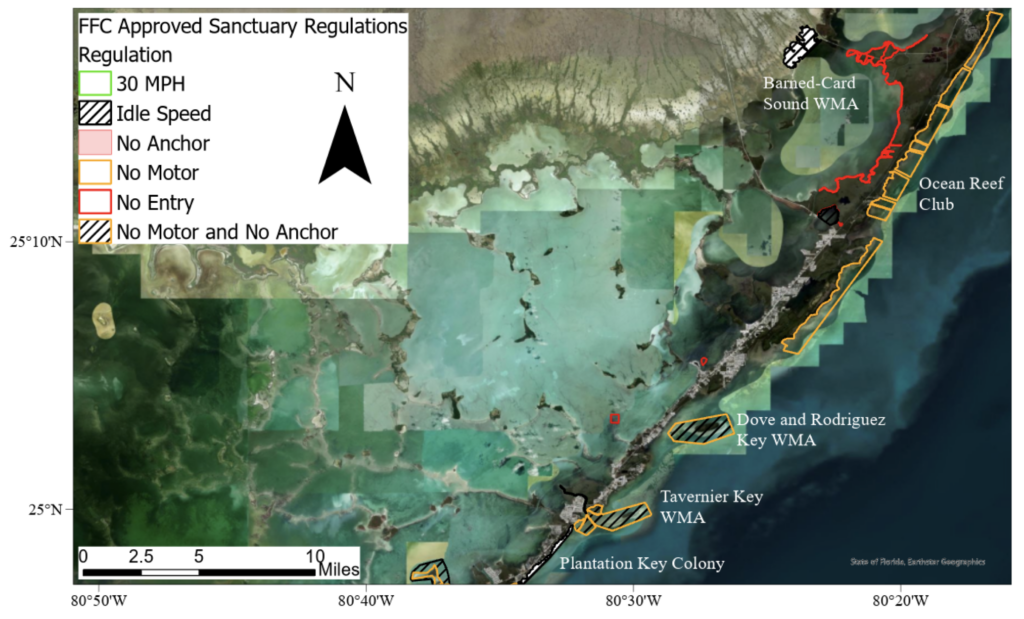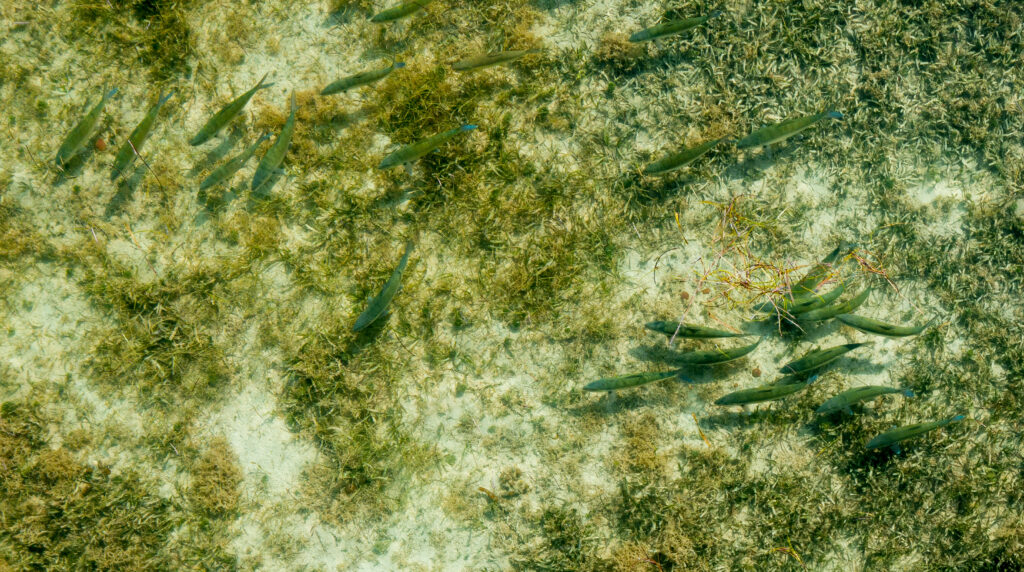A school of Florida Keys bonefish. Photo: Tyler Bowman
BTT is working in close collaboration with the Florida Keys Fishing Guides Association (FKFGA) and the Lower Keys Guides Association (LKGA) to support a set of science-based recommendations for the Florida Keys National Marine Sanctuary (FKNMS) Restoration Blueprint. These recommendations underscore the critical importance of habitat, water quality and enforcement—all to ensure that our shallow water habitats are adequately protected while also ensuring responsible access. In total, these recommendations increase seagrass and hard bottom protections by 2,357 and 1,752 acres.
For Wildlife Management Areas (WMAs) that the coalition supports as proposed by the FKNMS, the coalition’s overall recommendation is for responsible access that provides enhanced habitat protection. For WMAs, the coalition recommends that the “no entry” zoning proposed by the FKNMS be adjusted to 300’ as “no motor” zones, with 50’ “no entry” buffers that allow casting into them unless science suggests they are active bird colonies or nesting areas, like Pelican and Pigeon Keys.
Upper Keys Management Area
This map displays the coalition’s recommendations in the Upper Keys Management Region for zone modifications and approved zones for the FKNMS Restoration Blueprint. It includes:
- The rezoning of Dove and Rodriguez Key and Tavernier Key to no motor and anchor WMAs and expanding them to 8’ depth of water to provide protection for the tarpon migration fishing lane from combustion engine boat traffic on the edge of the flat.
- Support for the FKNMS proposed Whitmore Bite no motor WMA, and the addition of a no motor zone to the north to protect important flats Oceanside in Upper Key Largo (Ocean Reef Club). Together, with existing no motor zones within John Pennekamp State Park, these will create a marine zoning network protecting all the areas used by bonefish within the Key Largo area. This is a necessary action here and throughout the remainder of the Sanctuary.
- An additional idle speed zone adjacent to Plantation Key, that reduces stress on tarpon from boats traveling on plane.
- Increasing access to the Barnes-Card sound WMA from the proposed no motor zone to an idle speed zone.
Recommendations for new zones or expansion of FKNMS proposed zones are labeled on the map. To learn more, Click Here to read BTT’s comments on the FKNMS Restoration Blueprint. Click Here to read BTT, FKFGA, and LKGA’s Summary of Recommendations for FKNMS.





